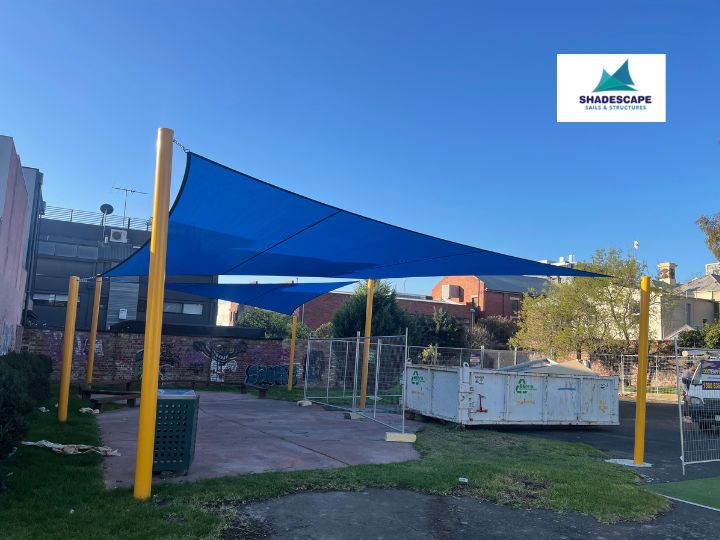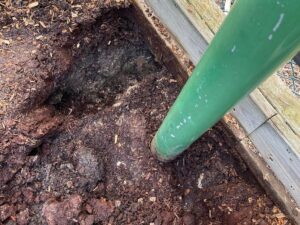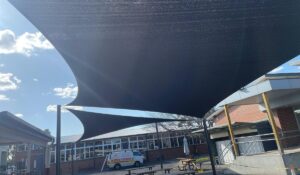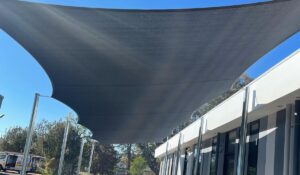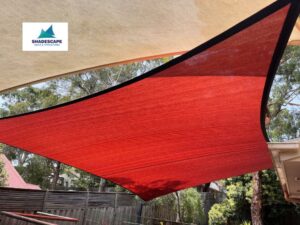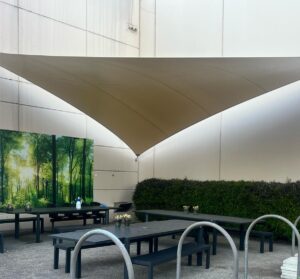Factors like material quality, environmental factors, installation processes, and maintenance processes influence the longevity of shade sails. If you understand these factors, you will be able to create techniques for better longevity. Therefore, make sure you consider all these before investing in shade sails.
Always trust a highly ranked shade sails company like Shadescape Sails and Structures for your shades. They not only have a wide range of shades but also the best customer care to help you invest in the most appropriate selection.
Factors Affecting The Shade Sail Longevity
These are some of the main factors to keep in mind to improve the life of your shade sails:
-
Material Quality
The material used in the shade sail primarily determines its lifespan. Better quality fabrics would generally result in much more resistance to wear and tear. Most shade sails use HDPE or PVC. HDPE sails are breathable and have a resistance to UV. Thus it usually lasts longer compared with lower-grade materials. PVC sails offer excellent waterproofing and strength but degrade faster under constant exposure to UV.
-
UV Resistance
Sunlight is one of the most damaging factors to the lifespan of a shade sail. These UV rays will eventually disintegrate the materials, causing it to fade, weaken, and then fail. In fact, most manufacturers usually coat their products with UV stabilizers, which enable them to be more resistant to damage caused by sunlight. Well-rated UV sails will then retain their protection for longer periods. When selecting a shade sail, make sure to pick one that has an ultraviolet protection level of at least 90%. UV exposure without proper treatment might reduce the material’s lifespan when exposed to direct sunlight.
-
Environmental Conditions
The most important factor about shade sail wear and tear is environmental conditions. Places with heavy rain, high winds, and snow create more difficulties. Strong winds may tear it open if not protected properly. Heavy rainfall will leave water on the sail and stretch or tear the sail. Snowy conditions add weight and exert pressure on the sail structure. Consider the local weather condition when making your choice of shade sail, and look for the ones which are produced to withstand specific environmental conditions.
-
Installation Techniques
Proper installation allows a shade sail to tolerate harsh weather. Incorrect installation makes it sag, allow water to pool there, and increase the stress in the fabric. A well-constructed tensioning system will distribute the weight evenly, helping to keep the integrity of the sail intact. You can also minimize the damage through the proper use of hardware and anchors. High-quality stainless steel or aluminum components do not rust and corrode. They extend the lifespan of an installation. You can increase the efficiency and durability by proper installation.
-
Orientation and Positioning
Exposure to elements of a shade sail might depend on its orientation. Those located in full direct sunshine and unobstructed area will degrade faster than those more strategically located. Additional protection from the sun, rain and wind is possible by trees, houses, or other barriers around them. Position your shade sail such that it allows water to drain and distribute it in a manner that prevents it from pooling so as not to stretch the fabric beyond its limit.
-
Maintenance Practices
You should also maintain shade sails to extend their lifespan. Cleaning the fabric regularly removes dirt, dust, and debris accumulating on the sail, which usually cause wear and tear. You should only use mild detergents and water for cleaning the shades. It is best to avoid chemical ingredients that could damage the material.
-
Seasonal Considerations
The shades sails, in any case, have an influence of the seasonal fluctuations. In extreme harsh areas, remove the sail during extreme weather such as heavy storms or snowfall. During such times, it can prevent the sail from possible damage.
-
Shade Sail Design
The design and shape of the shade sail also determine the longevity of residential shade sails. While it is a triangular, rectangular, or square design, all have their merits. For instance, triangular sails quickly respond to the wind aspect as its aerodynamic form allows for versatile adjustment.
-
Patterns of Use
The usage of a shade sail has an impact on longevity. Continual tension, from being stretched tight, can cause more wear. If a sail is left up during storms or windy weather, it can get damaged more quickly than one that is cycled off frequently. The removal of sail when not needed makes the experience very long-lived for many users. However, high-quality material and installation are even more essential for year-round usage.
Conclusion
The life of commercial shade sails depends on many factors, such as material quality, environmental conditions, installation techniques, and maintenance practices. You have control over these variables and managing them will make your shade sails functional and attractive for many years. Proper consideration during selection and installation, along with regular maintenance, can greatly improve durability and performance.

